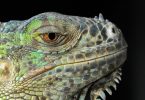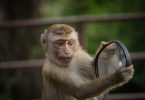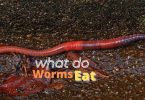Sea pork is also known as tunicate. Sea pork is of the Animalia Kingdom, the phylum is arthropoda and it belongs to the class of insecta and the order of Hymenoptera, and belongs to the family of Vespidae.
However, it is necessary to know that tunicate is (are) classified in almost the same phylum as mammals, fish, and even other bony organisms or animals with backbones, although they inhabit a quite different subphylum.
Tunicates also known as sea porks are strong globs of small cellulose zooids, which are tiny, individual animals that live together in a group or colony. The zooids appear in small sac-like bodies, with colonies that are usually filled with about hundreds of the tiny organisms, or even millions of the tiny organisms.
More so, this species of organisms lives in both the shallow water and the deep water where they form groups or colonies up to twenty-three inches long, thirty feet deep. They are food or prey to fishes, sharks, skates, and most sea bottom feeders.
However, it is necessary to know that tunicates are obtained from the virtually invisible outer covering of the organism also known as the test or equally called the tunic, which encloses the group or colony. Apart from Sea porks, sea grapes and sea squirts are tunicates as well.
In order to reproduce new groups or colonies of tunicate or sea pork which is our focus in this article, there has to be a zooid larva that is swimming freely, then they gradually start to gather and slowly attach themselves to substrates that are quite hard.
Some of such substrates that are quite hard include pilings, jetties, docks, floating debris, or even boat bottoms. After what seems to be an attachment or a wholesome pairing, the new colonies begin to settle down as well as start to grow together through secreting the digested cellulose that they have acquired through the feed they obtain from the activity of filtering the sea water.
Now, it is however the digested cellulose which eventually becomes the external or outer covering of the sea pork (or the tunicate).
In this article, we will share with you all you need to know about sea pork.
Where can Sea pork be found
While we have an idea of what Sea pork is, it is also important to know where sea pork can be found. Aquarists have over the years discovered sea porks to commonly inhabit the Atlantic Coast from Maine through Florida, and also along the Gulf of Mexico. One thing is certain they dwell in the deep waters, and in the shallow waters.
Description
It is also necessary that the appearance of the sea pork species of tunicate is explained for easy identification. Sea porks like most tunicates are known for their variety of shapes like some are barrels, while some are bottles, and some still have ball like shapes.
Sea porks have a certain texture that is very much noticed when the sea animal or tunicate is physically examined. For instance, there is a certain texture from the brains of the sea pork, to the pockmarked putty of the sea pork. Again, sea porks have a variety of colours, like: deep red, beige, translucent blue, and lavender.
However, it is not always easy to identify the sea pork, especially with the colours predominant among them. For instance, for most sea porks or tunicates, the colour on the outer part which is very visible is just a slimy outfit which is also called a Tunic, and usually a group or colony of zooids; the tiny creatures of the sea wear it.
Also, while most sea porks or tunicates are in colonies, some other tunicates choose to be solitary (not belonging to any colony) in nature and the others are kind of pelagic (which means that they drift around a lot in open water).
More so, these organisms are more often than not found in a group of others or in a colony because they are strengthened by numbers.
Like we established earlier, sea porks are bottom dwellers and are usually stuck to the bottom part or the depth of the sea. Going by aquarist’s records, the seafloor is usually about six hundred and sixty feet deep, which is about two hundred meters from the surface, as they wax stronger in their own bag of shield.
Amazingly, they discover and get attracted to each other while they are still babies, they get attached and begin to co-exist together, doing so many of their live activities together. Sometimes one of the colonies could be beached, which accounts for why they could be found on the beach or by the sea shore. Some of them get beached as a result of the storm or the waves that come with the storm.
Unlike most sea animals or species of aquariums, sea porks are not very adventurous as they are not in the habit of swimming around the sea, or from one corner to the other. They really prefer to be where they are, mostly stuck at the depth of the sea. So as boring as their lives of little or no adventure could be, the tunicates or sea ports usually get the attention of aquarists as a result of their different pattern of living as well as the story of how they came to be.
That is not all about the description of sea porks. Sexually, or rather when it comes to the part of reproduction, sea porks are simply hermaphrodites (hermaphrodites are organisms that have both female reproductive systems, and the male reproductive system).
Also being asexual (that is the ability to fertilize oneself), which is also common among plants and other animals, sea porks intentionally avoid getting self-fertilized. So different species of sea porks and tunicates scatter sperm cells and egg cells and often reject each other while forming their own gametes. Although sea porks do not have back bones even till their adulthood, they are considered to be chordates.
While in the early stages of the cycle of their lives, the larva of sea pork has a striking resemblance with the tadpole. Sea porks at this level possess a tail as well as a notochord. They could dwell on the surface of water until they are ready to search for a colony, then they swim to the bottom of the sea and dwell there.
Life Cycle
You already know the sexuality of the sea pork, and how they exist in colonies, and how they are bottom dwellers. You will also find out about their presence and the effect of their presence or their role in the ecological system. It is important to understand the life cycle and possibly the lifespan of the sea porks in this section.
We already know that ascidians are mostly hermaphrodites, and like other species of ascidians, the species and colonies of sea porks each have a single ovary, as well as a single testis, which is either close to the gut, or is placed on the body wall of the sea pork.
In some other single species which avoid colonies, the sperm and the eggs are usually shed in the sea where the larvae most of the times are planktonic. While in some others, especially the sea porks or the ascidians that are colonial species, the sperm is often released into the water, and is thereafter drawn in the other individuals’ atria following the current of the incoming flowing water. That’s not the end, in fact that is just the beginning, because the fertilization then happens at that point, and soon, there are eggs brooded a lot throughout the period of early development.
More so, there are other larval forms that appear physically like primitive chordates or in resemblance with chordates that are primitive, and attached to them is a notochord, that is a stiffening rod, which superficially shares a resemblance to tiny tadpoles just like we stated in the preceding section where we did described the physical appearance of the sea pork. So, these little tadpole looking ones swim via the undulations of their tails and may possibly have a very simple set of eyes, a balancing organ, a statocyst, and an ocellus.
When they are fully developed, the larva of some of the species, the sessile species precisely, searches for a rock that they consider very suitable and then carefully attaches itself to the body of that suitable rock.
The larval form of the sea pork is usually not capable of feeding in itself, in fact it is not capable of feeding at all, although it could have a very rudimentary digestive system, which is mostly only a dispersal mechanism for the larval at the time.
Many more physical changes take place in the body of sea pork during its metamorphosis which is also one of the most important being of its cerebral ganglion reduction, and which also controls the movement of the larval and is also very equivalent to the brain of the vertebrate.
This could be likened to the common saying that the sea pork or the sea squirt feeds on its own brain.
Mode of feeding
As much as the sea pork live in colonies and are bottom dwellers who live in the sea where they sometimes appear to be non-existent, the sea pork has a mode of feeding which we will be sharing with you in this section.
First, almost all species of tunicates including sea porks are known to be suspension feeders who capture the planktonic particles left in the sea by constantly filtering the water of the sea through their body surfaces.
Here is what it means for an organism to be a suspension feeder. A suspension feeder is an animal or an organism that feeds mostly on the substances or the materials that have either been suspended or abandoned in water or in sea, and it also has a whole lot of different structural modifications and systems with which it uses for the proper straining out of its meals. Apart from the sea pork, planktonic organisms are very obvious examples of suspension feeders.
So, like other ascidians, species of sea pork are usually very constant in their own digestive processes, while the other species of tunicates usually have very similar systems. It is true that they filter water with their lit body, this is accounted for through the water that is constantly drawn into their body surface through their buccal siphon and also by the action of the cilia lining of the gill slits.
In order to get a lot of food, an average species of ascidian, tunica, or sea pork will just need to process at least about a single body volume of water in a second constantly. This is also drawn through the net lining of the pharynx which usually is continuously or constantly secreted by the body’s endostyle.
However this net is made of some mucus sticky threads that have holes of about zero point five (0.5µm) in its diameter, and this hole has the capacity to trap materials or rather planktonic particles; bacteria included. So the net is usually rolled up on mostly the dorsal side of the sea pork’s pharynx, so the net, the trapped materials or planktonic particles are then drawn into the sea pork’s esophagus.
Still on the mode of feeding, the gut of the sea pork is usually U-shaped, and it also ciliates to move the swallowed or trapped planktonic contents along. More so, the stomach is a quite enlarged or enormous region that is at the lowest part of the U-bend. Now the enzymes of digestion in the sea pork are often secreted, and even a pyloric gland usually leads to further secretions.
When the meal of this suspension feeder is finally digested, circulation begins just like in human beings. The circulation of food begins with the movement of the food around the intestine, in which absorption of the food by the system of the sea pork begins, after which there is a movement of the undigested food or remains in to the rectum; a place where the undigested remains or particles start to form into waste metabolism like strings or even faecal pellets.
When that formation is done, excretion gradually creeps in. So the anus usually opens into the cloacal or the dorsal part of the peribranchial cavity, that is near the atrial siphon. While in this region, the faeces or the metabolic waste of the sea pork are usually caught up by the continuous streams of water that transports the waste out of the body and to the exterior.
As should be, the sea pork also coaches itself in its colony to the present situation in a sense that the sea pork’s buccal siphon is usually upstream and clearly does not take in any water that is contaminated
Economic importance of Sea pork
The thing about the Ecosystem is that everything in ecology is important and contributes to creating a balance in the ecosystem. Tunicates or sea porks bear a whole lot of chemical compounds which are usually used for medications by humans when they are duly processed.
Some of these chemicals and their uses will be shared in this section and they include the following:
-
Didemnin
This has proven to be effective especially against different types of cancer. Didemnin serves as an antiviral as well as as an immunosuppressant.
-
Aplidine
Aplidine is a didemnin proven to be effective specifically against different types of cancer and virus. There is an ongoing trial to see if the aplidine can be used as treatment for the coronavirus.
-
Trabectedin
Trabectedin is also a type of didemnin very effective against different types of cancer. However, sea porks have the ability to repair their cellular issues or abnormalities over a series of their generations. However, the same regenerative processes may be possible in the case of humans.
This ability underlying this phenomenon could lead to more insights into the numerous potential of tissues and cells that could be reprogrammed in order to regenerate any existing compromised organs in humans.
Sources of Biofuel
Sea porks and species of tunicates could also be used as a source of biofuel as researchers and aquarists have found. More so, the body wall of the cellulose could be dissolved and also turned into ethanol. The other parts of the sea porks are very rich in protein that could be processed into feed for fish.
Furthermore, having tunicates or sea porks on a quite enormous scale could be made very possible, and the economic implications of doing such could be quite alluring.
However, the elimination of sea porks or other species of tunicates has little or no tendencies to disrupt the ecosystem because they have little or no predators which reduces the impact they can make in the ecology. Also because sea pork are bottom dwellers are deeply based in the sea, that procreation has no impact on the production of food.







